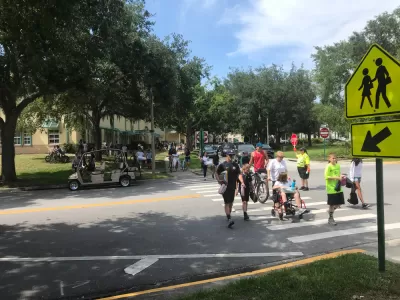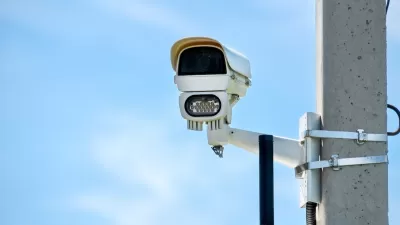Even in the absence of lethal collisions, the experience of repeated near-misses can discourage pedestrians from walking and degrade public perception of road safety.

While cities rely on pedestrian deaths and crash data to understand how safe their infrastructure is, near-misses can be an important metric for road safety, writes Dian Nostikasari. But the difficulty of measuring these incidents means they're often left out of the conversation, while the trauma caused by close calls with vehicles makes it less likely that people will walk in the future and causes parents to refuse to let their children walk to school if there's a fear of speeding or inattentive drivers.
According to Nostikasari, "capturing these incidents may reveal patterns of safety issues and provide opportunities to address them before a crash happens." Some cities are exploring tools to help capture data on close calls, identify locations that need improved safety measures, and understand public perceptions of safety. These include self-reporting mechanisms, app-based crowdsourcing tools, and analytics using traffic camera data.
Nostikasari writes that "A multi-faceted approach to addressing safety issues requires understanding the multiple facets of safety experiences and recognizing that those experiences are as valid as reported crash data can lead to future investments that honor the authentic needs of communities." Addressing traffic safety must be an inclusive effort that considers the lived experiences and needs of diverse users.
FULL STORY: Why Road Safety Is About More Than Just Crash Data

Alabama: Trump Terminates Settlements for Black Communities Harmed By Raw Sewage
Trump deemed the landmark civil rights agreement “illegal DEI and environmental justice policy.”

Planetizen Federal Action Tracker
A weekly monitor of how Trump’s orders and actions are impacting planners and planning in America.

Why Should We Subsidize Public Transportation?
Many public transit agencies face financial stress due to rising costs, declining fare revenue, and declining subsidies. Transit advocates must provide a strong business case for increasing public transit funding.

Understanding Road Diets
An explainer from Momentum highlights the advantages of reducing vehicle lanes in favor of more bike, transit, and pedestrian infrastructure.

New California Law Regulates Warehouse Pollution
A new law tightens building and emissions regulations for large distribution warehouses to mitigate air pollution and traffic in surrounding communities.

Phoenix Announces Opening Date for Light Rail Extension
The South Central extension will connect South Phoenix to downtown and other major hubs starting on June 7.
Urban Design for Planners 1: Software Tools
This six-course series explores essential urban design concepts using open source software and equips planners with the tools they need to participate fully in the urban design process.
Planning for Universal Design
Learn the tools for implementing Universal Design in planning regulations.
Caltrans
Smith Gee Studio
Institute for Housing and Urban Development Studies (IHS)
City of Grandview
Harvard GSD Executive Education
Toledo-Lucas County Plan Commissions
Salt Lake City
NYU Wagner Graduate School of Public Service





























